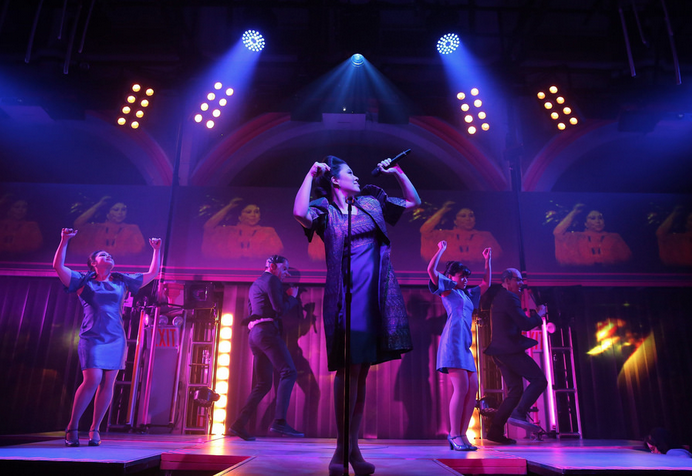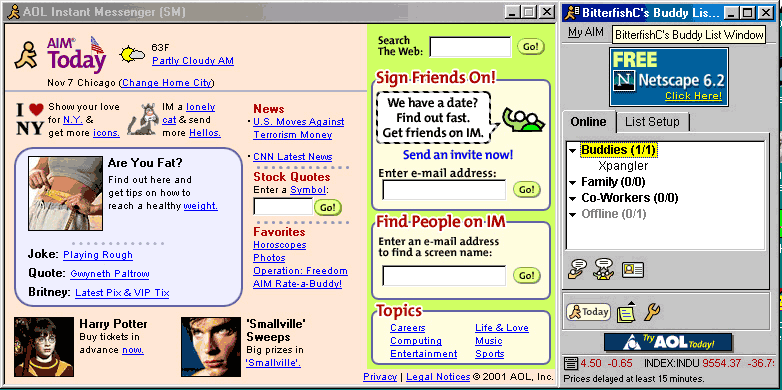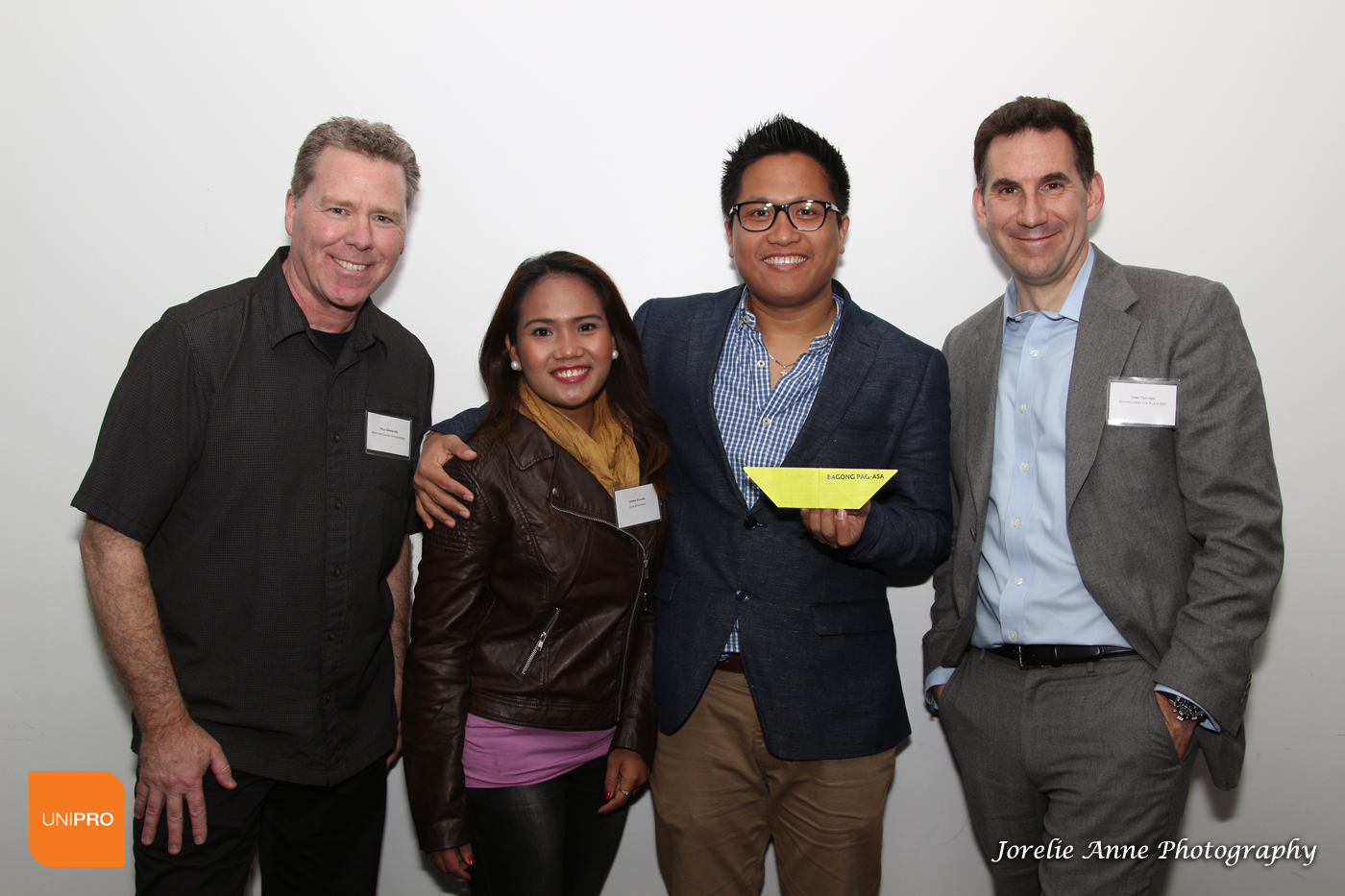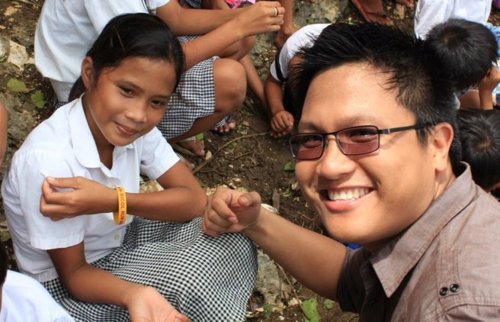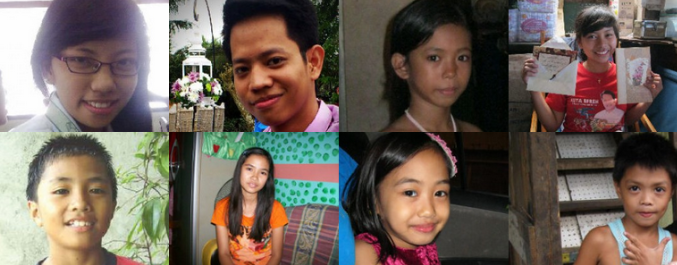By Nicole Maxali, guest contributor
My boss asked if I want the New York Times to read. I say “Sure!” and read it on the train ride home. The cover story of the Fashion & Style section is an interview with Talking Head’s lead singer David Byrne and Cyndi Lauper. (Side note: I’m a huge Cyndi Lauper fan. And one of the last conversations my father and I had before he suddenly died in 2011 was about Cyndi’s artistry, her drive as a creative, and the fact that she followed the beat of her own drum). In the article Byrne & Lauper share their “famous pasts and their theatrical presents — she as the Tony-winning composer and lyricist of the Broadway hit Kinky Boots, and he as the Obie-winning creator of the musical spectacle Here Lies Love, about the former Philippine first lady Imelda Marcos."
I’ve been dying to see both musicals since I moved to NYC. Last year, Here Lies Love played for an extended run but I wasn’t able to catch it because I was either too busy or too broke. But the article stated that Here Lies Love returns to The Public Theater for a permanent run in April! Another chance to see it? Score! I immediately hit up my friend to see if we can go together. I get a text from her two days later saying, “Do you want to attend the preview with me?” See a $119 show for FREE? Double score! At this point, I don’t know what to expect except that it’s a 90 minute show and its set in a disco club so there are no seats and dancing is highly suggested.
I wear my most comfortable dancing shoes and meet her in the lobby of The Public Theater. We wait and wait and wait. She texts her contact but no one comes to meet us. We wait some more. And she notices a big group of gay boys going up a flight of stairs. Then a tall man in all white with white hair enters the lobby and heads towards the stairs. She asks him a question and he gestures us to follow. At this point, I’m trying not to geek out. I’m trying not to blurt out:
“I loved your interview with Cyndi in the NY Times!” or
“My dad loved the Talking Heads! My mom thinks you’re a genius!” or
“Hi, I’m Nicole Maxali and you’re DAVID BYRNE!”
Yeah, so I don’t say any of those things and just keep my mouth shut as we ascend the staircase that leads to The LuEsther Theater or the disco club that was once the LuEsther.
We walk in and it’s a typical club equipped with black lights, go-go stages, huge screens and a DJ booth above us. No chairs. No VIP bottle service couches. Nowhere to sit. Nothing like you’d expect a musical show venue to look like. And then it begins.
I have to admit there was a moment in the beginning of the show, when the liberal SF State Pilipino American Collegiate Activist in my head started to say: Wait. Is this show just a glorification of the Marcos era? Is Byrne not going to bring up the fact that the 1,000 pairs shoe lady was really part of a horrible time in Philippine’s history? Is this just going to be about Imelda’s extravagant life of excess?
In that moment I was hoping this wasn’t going to be like The Help. The Oscar-winning film has raised objections in the African American community, which may have to do with the fact that it was written by a white author. In a statement about the movie, The Association of Black Women Historians have said:
“Despite efforts to market the book and the film as a progressive story of triumph over racial injustice, The Help distorts, ignores, and trivializes the experiences of black domestic workers.”
So although I am a third gen Filipino-American from Cali, I still remember my grandmother’s horror stories about what the Marcos regime was doing to our mother country and our family in the 70’s & 80’s. And how much we celebrated in San Francisco when Aquino took office in 1986. I remember that regardless of Imelda’s extravagant life, her people (some of my family members) were suffering and abused during her twenty year reign as the first lady of the Philippines.
But I tried to keep an open mind and I’m glad I did. Midway through the show, we witnessed how seamlessly Byrne and the director, Alex Timbers, incorporated historical facts into the story line of the musical both lyrically and visually. In the days following the preview, I found out that David Byrne did a thorough job at researching and investing his time into this show. Ten years to be exact. On his blog, David writes:
“Here Lies Love is entirely true and much of the lyric content comes from speeches and interviews the various characters gave over the years.”
I respect him even more for putting the work in and for incorporating actual speeches and interviews into his artistic vision.
Once I had calmed my inner Filipina activist, I was able to be immersed into the world of disco, love and politics. Yes, it’s everything the descriptions and reviews say it is. It’s fun and enthralling but at times heart-wrenching but beautifully acted and sung throughout. I also realized that this show was less a glorification of Imelda and more a story that humanizes this woman’s journey. It humanizes a woman that both the media and personal greed made into a larger than life caricature like a Filipino Marie Antoinette… except with possibly a hundred times more shoes and her head intact. There was one point of the musical that made me actually feel sorry for her and feel like if I were in her shoes (no pun intended), maybe I would’ve turned into the woman she became.
As I danced my way through each scene I felt a sense of pride. I was ironically witnessing Filipino-American history of a Filipino history lesson on stage. I was proud to see other Filipino artists singing, acting and dancing on stage while still being Filipino characters. The first time I witnessed a Filipino actor on stage in NYC was Lea Solanga in Les Misérables where she played Éponine (a French teenager). That was 18 years ago! Finally two decades later there is a semi-mainstream show that is representing Filipinos in a way that isn’t either a racist stereotypical comedic bit or a highly sexualized prostitute or a submissive mail order bride.
There has never been a musical or play with this much media attention (Vogue, New York Times and The New Yorker have all written reviews on the show) and Off Broadway support in NYC that is written about Filipinos casted with “mainly” Filipino actors. I use quotes around mainly because in my research I found that almost all of the characters in the musical are Filipino except for the main actress playing Imelda. Wait, What? Yeah, the actress Ruthie Ann Miles is of Korean descent from Hawaii. I do have mixed feelings about producers casting any person of color for a specific ethnicity but I will say that on the night of the preview Ruthie Ann Mills was under the weather and so her standby performed instead. Her stand in (or swing), Jaygee Macapugay, was amazing and she is of Filipino descent. But alas as David Byrne told us before the show, “Unfortunately, the swing will not be doing any of the hair or costume changes tonight.” That’s ok. Just another reason to go back and see the show.
There was one question that I wanted to ask David Byrne. Why Imelda Marcos? I unfortunately didn’t have the (disco) balls to do it. Fortunately, I looked over the NY times article my boss gave me to read on the subway and found my Q&A there:
"I read somewhere that she loved going to discos. She went to Studio 54. She was hanging out with Andy Warhol and Halston and those people. She put a mirror ball in her house. How many people do that? I thought this woman lives in that world, and that means something. The fact that disco music connects with her life, how she sees herself, that’s significant. And I thought: I know that music, I like that music. Maybe I can tell a story that way." - David Byrne
And with music as his passion David Byrne did just that. Probably unaware how inspiring his ten-year project would be to future Filipino-American artists, his own passion gave me hope that if a story about a Filipino woman can garner so much attention and support outside of the Filipino-American community then it is possible to do the same with my own work.
Because how do communities of color rise above racism and under representation in the mainstream media? We write, produce and direct or own stories regardless if the gate keepers ask us or allow us to do it. In a recent article about Asian American representation on TV, Alanna Bennett added the quote from Pulitzer Prize winning author Junot Diaz:
“You know, vampires have no reflections in a mirror? There’s this idea that monsters don’t have reflections in a mirror…And growing up, I felt like a monster in some ways. I didn’t see myself reflected at all… And part of what inspired me, was this deep desire that before I died, I would make a couple of mirrors.”
On that brisk April night, I walked out of The Public Theater humming Here Lies Love in my head. And in my heart… inspired that my stories will manifest one day on screen/stage. Thank you for this musical that is a huge mirror for Filipino-Americans, David Byrne. My mom is right. You are a genius.
Info and Tickets: www.herelieslove.com/
General tickets: $99.00 Rush tickets: A limited number of $40 day-of-performance rush tickets will be available, at The Public’s Taub Box Office (425 Lafayette Street, NYC) starting at 6:00 p.m. on all Mondays, Tuesdays and Wednesdays for those evening performances.
The original version of this post originally appeared on Nicole Maxali’s blog.
Photo credit: Here Lies Love


